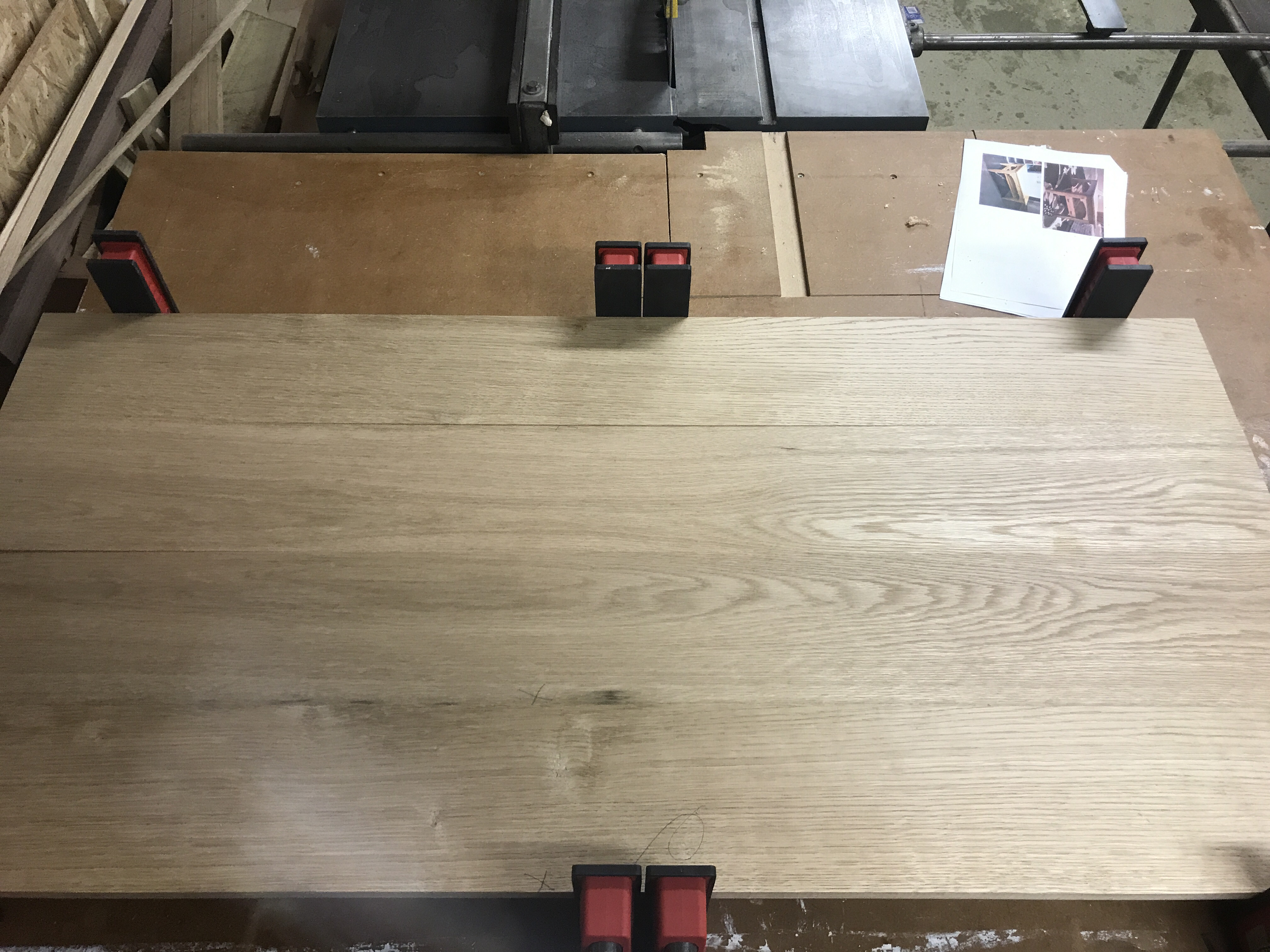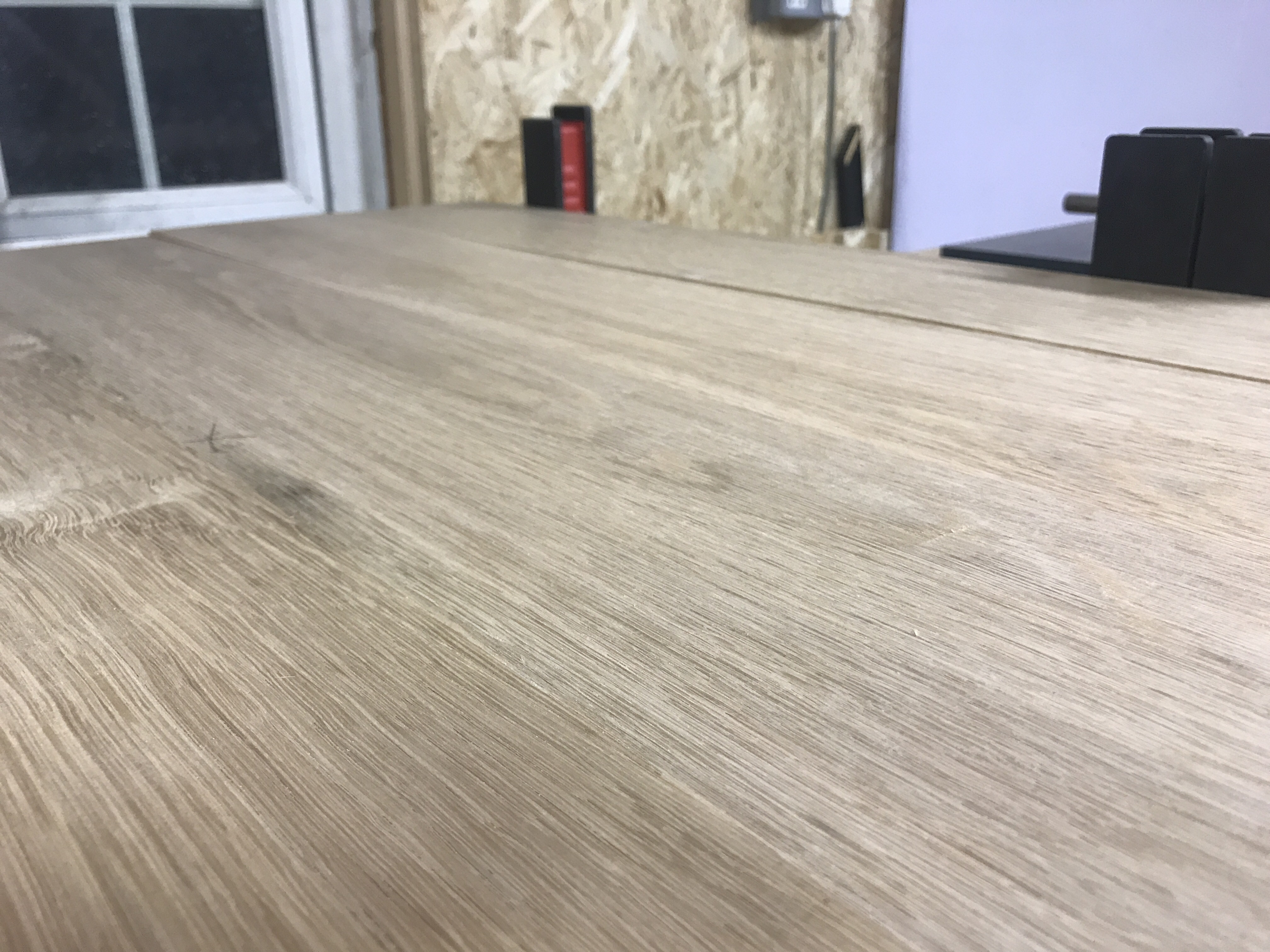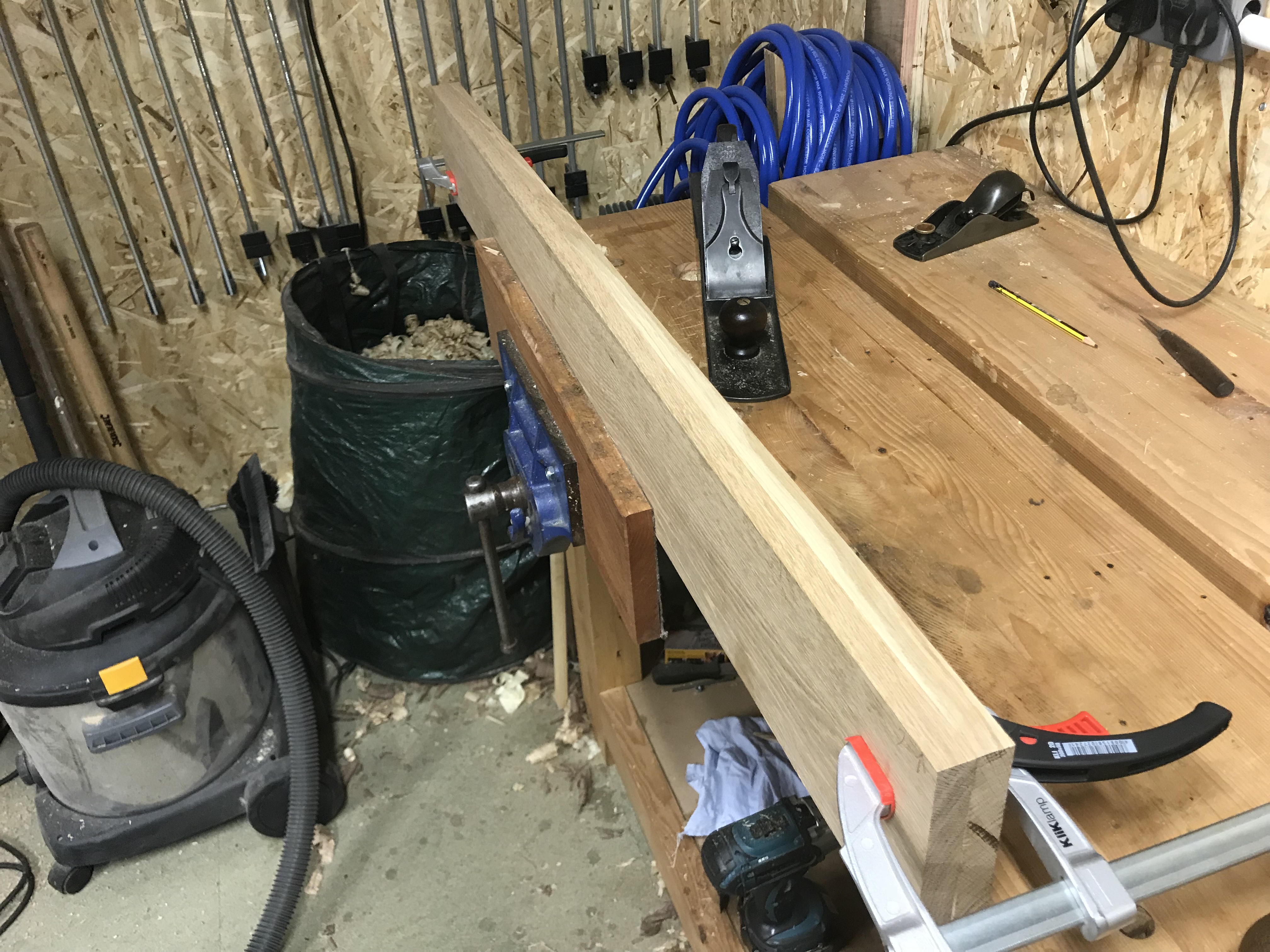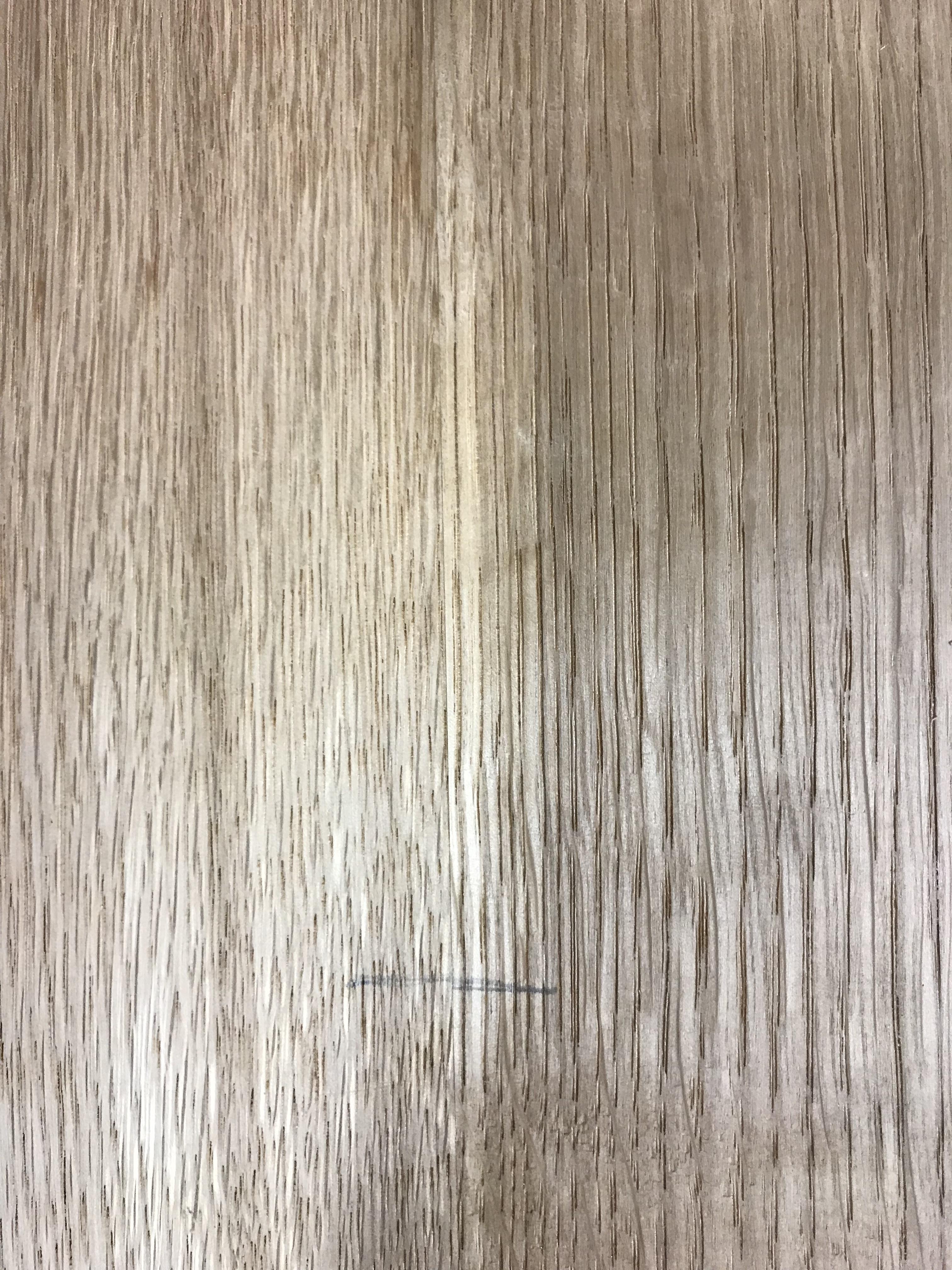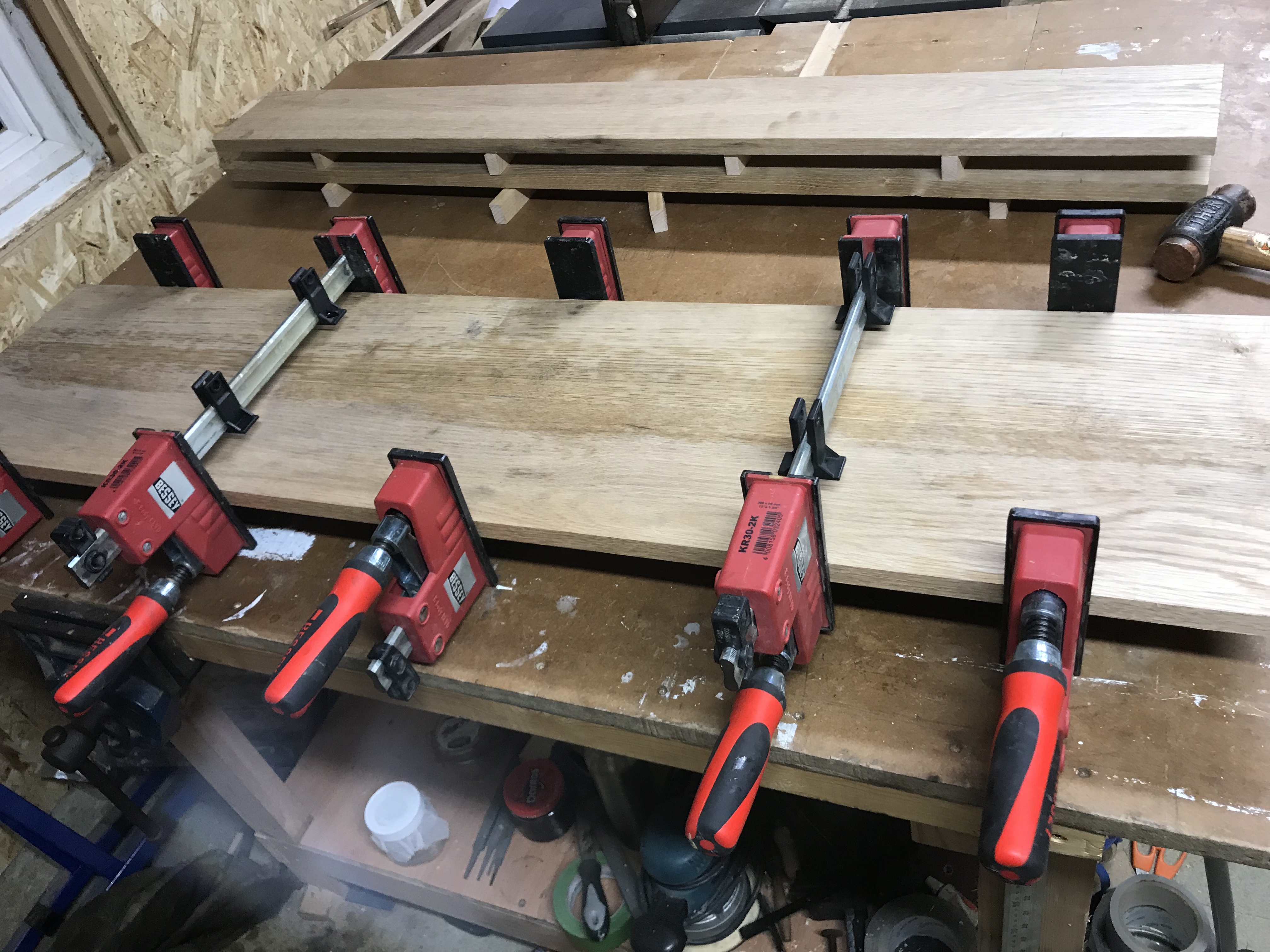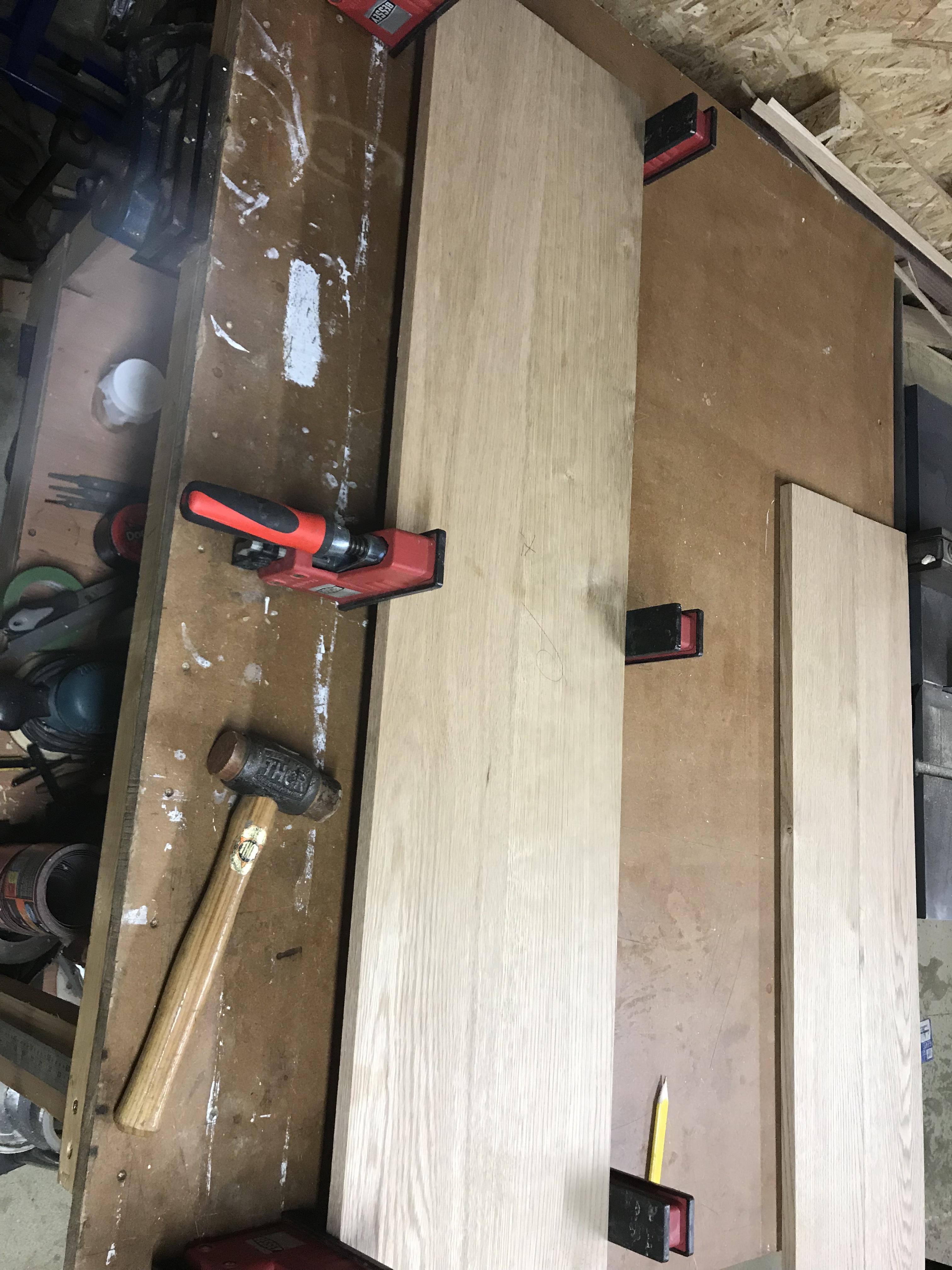memzey
Established Member
Hi gang,
I'm making a coffee table for our front room and have planed and thicknessed the oak boards for the top. They are 6" x 4' and 3/4" thick. I will glue them up to make a 2' x 4' top using biscuits to help alignment. Post-thicknessing one of the boards I plan to use in the middle of this glue up has done the old lignum disco manoeuvre and bowed along its length by about 1/4" or slightly less at the peak of its "hump" . I'd rather not replace this as it's a good match to its mate (cut from the same board) and was wondering what people on here would do in my situation? The bend is easily taken out with some downward pressure and I wondered whether the fact that it was going to be glued up to straight boards either side of it plus the use of biscuits would be enough to keep it straight in use?
All advice greatly appreciated!
I'm making a coffee table for our front room and have planed and thicknessed the oak boards for the top. They are 6" x 4' and 3/4" thick. I will glue them up to make a 2' x 4' top using biscuits to help alignment. Post-thicknessing one of the boards I plan to use in the middle of this glue up has done the old lignum disco manoeuvre and bowed along its length by about 1/4" or slightly less at the peak of its "hump" . I'd rather not replace this as it's a good match to its mate (cut from the same board) and was wondering what people on here would do in my situation? The bend is easily taken out with some downward pressure and I wondered whether the fact that it was going to be glued up to straight boards either side of it plus the use of biscuits would be enough to keep it straight in use?
All advice greatly appreciated!

































